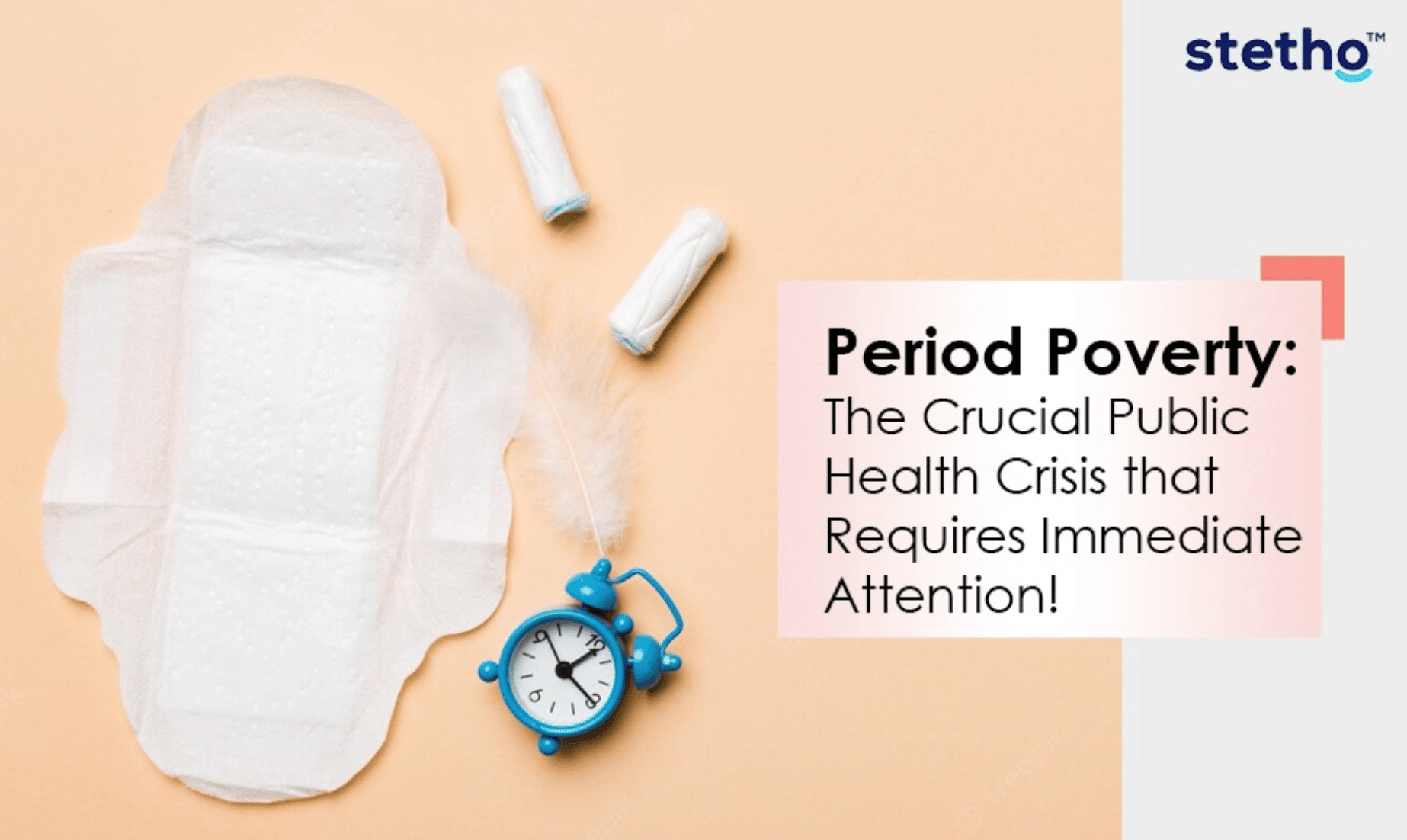Menstruation is a biological process that occurs every month in women worldwide, from puberty to 52-55 years of age. It is the process of preparing your body for pregnancy, and when no pregnancy occurs, your body sheds the uterus lining and other tissues.
Generally, women experience various symptoms during and before menstruation. Some of these signs and discomforts that women experiences are bloating, mood swings, cramps, and fatigue.
While menstruation is a way of living for millions of girls and women worldwide, there is still an alarming situation for their health. It comprises of lack of access to menstrual hygiene products due to the financial burden, directly impacting their physical, and more specifically, reproductive & mental health. According to a resource, approximately 500 million people worldwide experience period poverty, putting women’s health at risk every month.
This blog highlights a brief overview of period poverty. Read further to learn more about the topic.
In This Article
What is Period Poverty?
Period poverty refers to the struggling circumstance of women & girls of low-income countries who lack knowledge of menstruation and the inability to acquire basic sanitation. According to UNICEF, 1.8 billion women worldwide menstruate, and of the 1.8 billion menstruating women, millions lack basic sanitation methods.
Without proper sanitation, women cannot manage their cycles healthily, leading to various infections and health risks. According to the CDC, “Basic sanitation is described as having access to facilities for the safe disposal of human waste (feces and urine), and the ability to maintain hygienic conditions, through services such as garbage collection, industrial/hazardous waste management, and wastewater treatment and disposal.”
Women worldwide lack access to clean water, menstrual products like pads and tampons, proper waste management, and menstrual education. With the lack of access and adequate knowledge of menstrual health and hygiene, women worldwide are jeopardizing their health.
Who is Affected by Period Poverty?
According to Days for Girls, a charitable organization for women, over 500 million women worldwide are affected by period poverty. That is 22 percent of our women’s population worldwide that are affected by period poverty and that lack proper access to menstrual health and hygiene.
What are the consequences of period poverty?
With period poverty being the lack of knowledge of menstruation and lack of access to menstrual products, there are a few consequences that can happen to women during menstruation and are not limited to:
- Infections, such as UTIs & RTIs
- Vulnerability
- Low attendance in school and work
- Missing out on daily life activities
- Lower self-esteem
- Morbidity
- Mental health challenges
- Shame and Stress
- Physical Health Risks
How to limit Period Poverty?
According to Cristiana Sandor, CEO of Stetho Health Systems, “Every woman has an important part to play in the daily lives of family, friends, coworkers, and menstruation is part of being a woman.” Without proper access to resources for menstrual hygiene, it is essential that we as women empower, uplift, and support one another through changes in our lives, such as menstruation. One way to eradicate period poverty is by ending menstrual stigmas and taboos. Through the correct resources, proper education on menstrual health and hygiene, and the support of other women worldwide, we can help limit period poverty for today’s generation and generations to come.
Final Words:
Period poverty can affect women in multiple ways and can be detrimental to women’s mental and physical health. Cristiana Sandor states, “From UTIs, RTIs, and even morbidity, young girls & women in different parts of the world need education on how to take care of their personal health & hygiene. The importance of our brands having this impact is crucial, to save lives and extend relief.”
With the proper resources, education, support from other women & sustainable products, we can reduce period poverty. Ending period poverty will help millions of women worldwide to attend school, work, and other daily activities, limit the risk of infection, and allow women to show up as their best selves every day. Investing in the right products and finding the right resources to educate yourself on proper menstrual health and hygiene is another way to limit period poverty.
Ava: Women Health and Hygiene segment, introduced by Stetho Health Systems, is a brand that offers sustainable products and resources that helps aid in the reduction of period poverty. Cristiana Sandor added, “With Ava: Women Health & Hygiene, we are dedicated to solving the existing issue that women everywhere face with innovative and fresh products for Menstrual Health & Hygiene.”
Frequently Asked Questions-
What is meant by period poverty?
Period poverty refers to the struggling circumstance of women & girls of low-income countries who lack knowledge of menstruation and the inability to acquire basic sanitation.
Who is affected by period poverty?
Generally, women & girls of low-income countries are majorly affected by period poverty.
What are the common consequences of period poverty?
With period poverty being the lack of knowledge of menstruation and access to menstrual products, its other consequences include infections, vulnerability, morbidity, and mental health challenges.
How to take control of period poverty?
Through the correct resources, proper education on menstrual health and hygiene, and the support of other women worldwide, we can help limit period poverty for current & upcoming generations.











